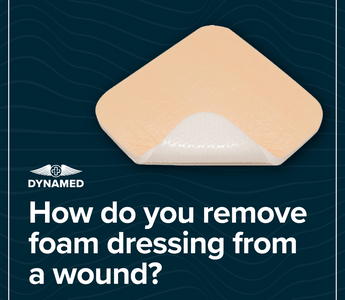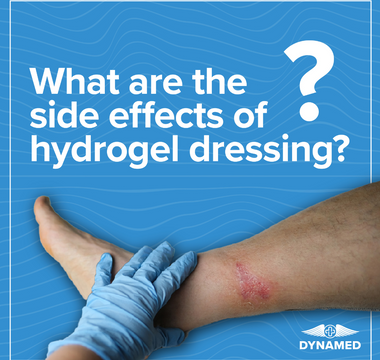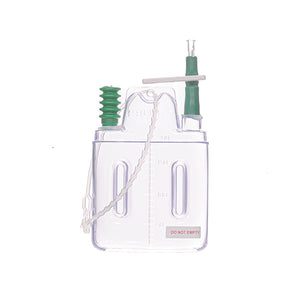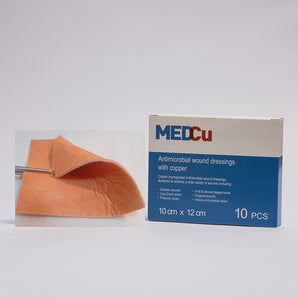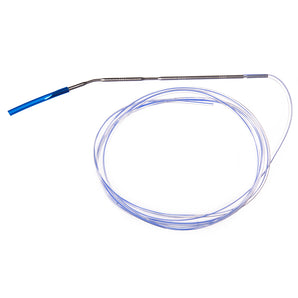Removing foam dressings from a wound is a critical step in wound care, ensuring proper healing and minimising discomfort. Whether it's for post-surgical care or managing chronic wounds, knowing how to handle these dressings correctly is essential. Foam dressings are designed to absorb exudate and protect the wound, but improper removal can disrupt the healing process or cause unnecessary pain.
As healthcare providers or caregivers, it’s important we understand the right techniques and tools for this task. By following best practices, we can promote effective wound healing and reduce the risk of complications. In this article, we’ll explore practical steps for removing foam dressings safely, ensuring optimal care for patients in hospitals, clinics, or at home.
Key Takeaways
-
Proper removal of foam dressings is crucial to support optimal wound healing and minimise discomfort or complications.
-
Foam dressings are designed to manage wound exudate, maintain moisture balance, and reduce pain during application and removal.
-
Prepare adequately by gathering necessary supplies, ensuring a sterile environment, and assessing the wound before starting the removal process.
-
Always loosen edges with saline or adhesive remover to avoid tissue damage, and remove the dressing gently to minimise pain.
-
Aftercare involves cleaning the wound, inspecting for signs of complications, and applying a suitable dressing to promote continued healing.
-
Avoid common mistakes such as rushing, skipping preparation steps, or improper disposal of used dressings to ensure effective and safe wound care practices.
Understanding Foam Dressings
Foam dressings are advanced wound care solutions designed to support healing and manage exudate effectively. They are a staple in medical care, addressing diverse wound types and conditions.
What Are Foam Dressings?
Foam wound dressings are soft, absorbent, and semi-permeable layers applied directly to wound sites. They feature a polyurethane base or similar component, ensuring optimal moisture retention while allowing vapour transmission. These dressings minimise wound contact, reducing pain during application and removal.
Examples of foam dressings include hydrophilic foam dressings and silicone-backed variants. They are suitable for treating moderate-to-heavily exuding wounds such as pressure ulcers, post-operative wounds, and diabetic foot ulcers. Manufactured by trusted providers like Dynamed Pharmaceuticals, quality foam dressings cater to evolving healthcare needs globally.
Benefits of Using Foam Dressings
-
Effective Exudate Management: Foam dressings absorb wound exudate, preventing skin maceration and promoting a clean, healing environment.
-
Moisture Balance: They maintain an ideal moisture level, enhancing the wound’s natural healing process.
-
Pain Reduction: The non-adherent surface minimises trauma during dressing changes.
-
Thermal Insulation: Foam materials insulate wounds, maintaining a stable temperature for improved healing.
-
Wide Applicability: These dressings work on various wound types, including chronic and acute wounds. Their versatility makes them one of the most valuable medical devices in wound care.
When choosing foam wound dressings, healthcare providers rely on quality products from industry leaders like Dynamed Pharmaceuticals to ensure effective outcomes.
Preparing To Remove Foam Dressing
Proper preparation ensures the foam wound dressing is removed efficiently and safely, reducing pain and preventing wound irritation. Organising the necessary steps beforehand contributes to effective wound care.
Gathering Necessary Supplies
Collect the required items to facilitate safe dressing removal. Essential supplies include sterile gloves, saline or prescribed wound cleaning solution, medical adhesive remover (if required), and a disposal bag. Additional materials like tweezers, sterile gauze, and dressings for reapplication might also be needed. Reliable foam wound dressings sourced from reputable providers, such as Dynamed Pharmaceuticals, help maintain the wound's integrity before removal. Using quality materials minimises complications during the process.
Ensuring A Sterile Environment
Maintaining a clean, sterile environment prevents infection during removal. Begin by washing hands thoroughly with soap and water, then dry them with a lint-free towel. Sterilise the work area, ensuring all supplies are ready for use. Wear disposable gloves to maintain aseptic conditions. If medical devices or tools are involved, confirm they're sanitised and sterilised. By adhering to these precautions, we enhance patient safety and protect the wound site from contaminants.
Step-By-Step Guide To Removing Foam Dressing
Properly removing foam wound dressing ensures the wound site's integrity and patient comfort. Following these steps helps optimise the healing process while minimising risks.
Assessing The Wound Area
Evaluate the wound site before starting the removal process. Check for signs of infection, such as redness, swelling, or unusual odours, to determine if additional medical intervention is required. Take note of the amount of exudate absorbed by the foam dressing, as it provides insights into the wound's progress and drainage levels.
Ensure proper lighting for clear visibility, preventing errors during removal. Use sterile gloves to avoid introducing contaminants and prioritise a hygienic approach.
Loosening The Dressing Safely
Initiate dressing removal by loosening its edges carefully. Saturate the edge of the foam wound dressing with saline solution or sterile water to reduce adhesion to the wound surface, especially if the dressing is dry. Avoid pulling directly to prevent damage to healing tissue beneath.
In cases where adhesive strips are used, apply a medical adhesive remover around the areas. This minimises discomfort and prevents skin tearing. If resistance persists, it may suggest adherence to tissue, so proceed with extreme caution.
Removing The Dressing Without Causing Pain
Lift the foam dressing gently, starting from one corner while maintaining downward pressure on the patient's skin. Use slow, even motions to avoid sudden discomfort or accidental tissue damage. If pain occurs, continue moistening the dressing to ease the process.
Dispose of the dressing in a biohazard container promptly, adhering to medical safety guidelines. Clean the wound site as instructed by medical professionals before reapplying a new foam dressing or other wound care products. When used with high-quality options like those from Dynamed Pharmaceuticals, foam dressings enhance wound care outcomes by balancing moisture, protecting against contaminants, and promoting painless dressing changes.
Aftercare Following Dressing Removal
Proper aftercare ensures effective wound healing and prevents infections. Foam wound dressings, such as those from Dynamed Pharmaceuticals, require the wound site to be cared for immediately after removal to maintain a clean, safe environment.
Cleaning The Wound
Remove residual exudate and debris to reduce infection risk. Use a sterile saline solution or prescribed wound cleanser, gently flushing the area without vigorous scrubbing, as this may irritate the tissue. Dry the surrounding skin softly with sterile gauze for optimal skin preparation before further assessment.
Inspecting The Wound For Complications
Examine the wound for any irregularities that may hinder healing. Look for signs of complications, such as increased redness, swelling, pus, or foul odours, as they can indicate infection. Document the wound's condition, noting its size, depth, and any unusual changes, to monitor progress.
Applying A New Dressing If Necessary
Choose a suitable dressing compatible with the wound stage. Foam wound dressings are ideal for absorbing moderate to high exudate levels while maintaining a moist healing environment. Ensure proper placement to cover the entire wound and secure it with adhesive tape or a secondary dressing, allowing effective protection and insulation.
Common Mistakes To Avoid
Rushing Through Removal
Removing foam dressings hastily often leads to skin damage or discomfort. Adhesive parts of the dressing can stick to the wound, causing trauma upon removal. Always take the necessary time to loosen the edges properly, using saline or a medical adhesive remover as required.
Ignoring Preparation Steps
Skipping preparation, such as sanitising hands, tools, or the work area, increases the risk of wound contamination. Properly preparing the wound care environment is crucial to prevent infections and maintain sterility. This includes gathering essentials like sterile gloves and medical devices designed to minimise cross-contamination.
Pulling Without Loosening
Pulling the foam wound dressing directly off without moistening or loosening it first can disrupt the wound-healing process. This approach may remove healing tissue along with the dressing, especially when adhesives are present.
Not Checking the Wound
Neglecting to inspect the wound site before or after removal can lead to overlooked signs of infection or complications. Signs to assess include redness, swelling, exudate levels, and odour. Ignoring these indicators may delay appropriate care.
Using Incorrect Dressings
Applying a new dressing that doesn’t suit the wound type or healing phase can reverse progress. For example, selecting a non-absorbent option may allow exudate accumulation and increase the risk of infection. Reputable providers like Dynamed Pharmaceuticals offer foam dressings with moisture-balancing properties that address various wound care needs.
Disposing Improperly
Discarding used dressings improperly creates biohazard risks. Follow clinical waste disposal guidelines to ensure safety and compliance with healthcare standards. Use sealed medical waste bags to avoid accidental exposure.
Conclusion
Removing foam dressings from a wound is a delicate process that requires attention, preparation, and care. By following the right techniques and avoiding common mistakes, we can ensure the wound remains protected, healing is optimised, and patients experience minimal discomfort.
Prioritising sterile practices, using appropriate tools, and selecting high-quality dressings are essential steps in delivering effective wound care. With proper removal and aftercare, we can support faster recovery and reduce the risk of complications. Let's always aim for best practices to promote better outcomes for those we care for.
Visit Dynamed Pharmaceuticals
Phone: 0861 00 00 43
Website: dynamed.co.za
Email (Sales): sales@dynamed.co.za
Email (Info): info@dynamed.co.za
Google Maps: Find us here
Frequently Asked Questions
What is the purpose of foam dressings in wound care?
Foam dressings are advanced wound care solutions designed to absorb exudate, maintain moisture balance, and protect the wound from external contaminants. They promote effective healing and minimise discomfort, making them suitable for various wound types, such as pressure ulcers and diabetic foot ulcers.
Why is it important to remove foam dressings properly?
Improper removal can hinder the healing process, cause unnecessary pain, and increase the risk of infection. Following best practices ensures patient comfort and protects the wound area, contributing to optimal recovery.
How can I prepare for removing a foam dressing?
Ensure a sterile environment by washing hands thoroughly, sterilising tools, and gathering supplies like sterile gloves, saline solution, and medical adhesive remover. Preparation helps prevent infection and protects the wound from contaminants.
What steps should I follow to safely remove a foam dressing?
Moisten the edges of the dressing to reduce adhesion, use a medical adhesive remover if necessary, and gently lift the dressing to minimise discomfort. Finish by cleaning the wound and disposing of the used dressing safely.
What are the key benefits of using foam dressings?
Foam dressings effectively manage exudate, reduce pain during dressing changes, provide thermal insulation, and maintain an ideal moist environment for healing. They are suitable for a wide range of wound types and stages.
How do I clean a wound after removing a foam dressing?
Use a sterile saline solution or a prescribed cleansing agent to gently clean the wound. Inspect the area for any signs of infection or irregularities before applying a new dressing.
What are common mistakes to avoid during dressing removal?
Avoid rushing the process, neglecting preparation steps, or pulling off the dressing without loosening it first. These mistakes can cause patient discomfort, damage the wound, and delay healing.
How do I know if there is an infection in the wound?
Signs of infection include redness, swelling, increased pain, unusual discharge, or a foul smell. If you notice these symptoms, consult a healthcare professional for further evaluation and treatment.
Can foam dressings be used for all types of wounds?
Foam dressings are highly versatile and suitable for many wound types, including pressure ulcers and diabetic foot ulcers. However, it is essential to choose a dressing that is appropriate for the specific wound type and healing stage.
How should I dispose of used foam dressings?
Dispose of used dressings in a biohazard waste container or as recommended by local medical waste guidelines. Proper disposal prevents contamination and maintains a safe environment.

